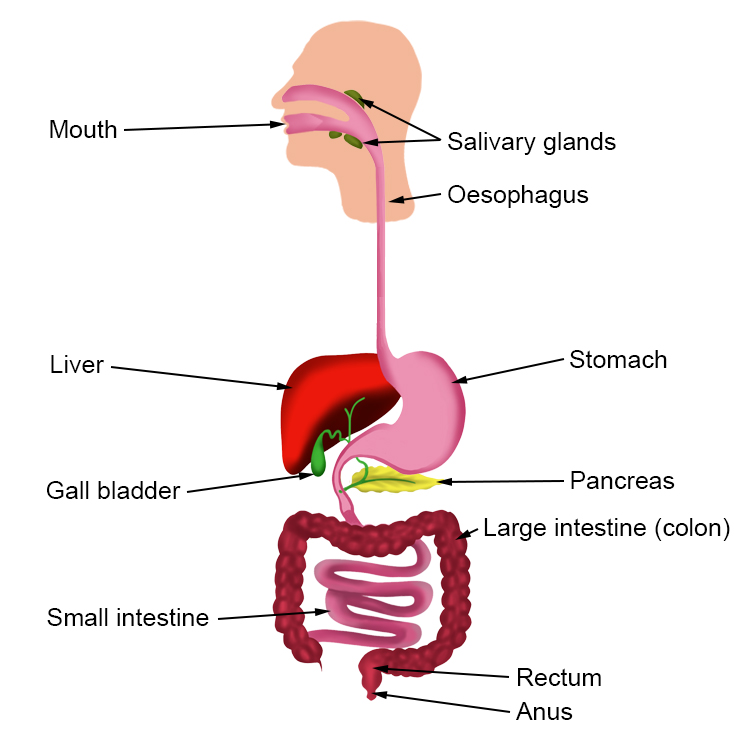What is the journey like for a bacon, lettuce, and tomato sandwich through a person’s digestion system? Start with the mouth and ending with absorption. Include where the digestion of fats, carbohydrates, and proteins take place.
1 Answer
See below.
Explanation:
1: The path.
Mastication of food (chewing) happens in the mouth, food is pushed into a bolus (ball), swallowed down into the esophagus, passes through the cardioesophageal sphincter into the stomach, exits out of the stomach through the pyloric sphincter into the small intestine, out of the small intestine through the ileoceal sphincter into the large intestine, then to the rectum, then exits the body through the anus (controlled by muscles in the external and internal anal spinsters).

2: Digestion - Bacon
Bacon is mostly fat and protein. Proteins are digested in the stomach with the help of an enzyme called pepsin and fats are digested by bile produced by the liver and lipase produced by the pancreas in the small intestine. The small intestine absorbs the nutrients and the large intestine absorbs the water.
3: Digestion - Lettuce + Tomato
Lettuce is mostly cellulose (fiber), which cannot be digested by the body due to the lack of a functional appendix in digestion. Absorption of small vitamins and water, though, occur in the large intestine. Tomato also contains cellulose, but also has some potassium and protein. Protein, again, is digested in the stomach and potassium is absorbed in the large intestine as well as the water.
4: Digestion - Bread
Bread is mostly simple carbohydrates if it's white bread (or complex carbohydrates if whole grain). The digestion of the carbs in bread starts in the mouth with salivary amylase and is continued in the small intestine with pancreatic amylase. Again, nutrients are absorbed in the small intestine.
Here's a table of all digestive enzymes and where they do their jobs for reference:
 )
)
Hope this helps!

